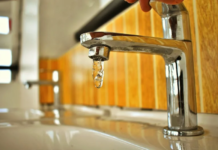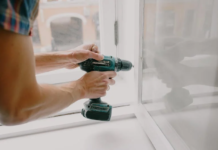Parts of a recessed light fixture:
- Housing:
A simple recessed light structure has a cylindrical housing which hosts the bulb and outer part is called trim.
The housings are either air tight or generally of four kinds:
- IC rated: insulation is in direct contact with housing
- Non IC rated: they are not in contact with housing
- IC rated remodelled: pre existing ceilings where insulation is present and in contact with the fixture
- Non IC rated remodelled: no insulation present.
The housing is present in order to avoid any fire hazard. They are available in sizes ranging from 4-6 inches.
Housing is in fact the most important part of a recessed light fixture as it helps in placement and overall fate of the fixture.
B) Bulbs
There are two types of bulbs for recessed lighting: .
- Directional lamps: contain reflectors that direct and control light.
- Diffuse lamps: control light distribution through their omnidirectional light.
The most usual lamps used are
Incandescent, CFL, halogen and LED bulbs. Although over the past few years LED bulbs have replaced every other bulb due to their efficiency and low maintenance cost.
Hence, led recessed lights are quite popular nowadays.
LED recessed lights can be used individually for decor or for functional lighting.
They are quite versatile and a number of lighting techniques can be achieved by layering the lights.
Recessed lights are used for general lighting, task lighting and accent lighting.
In order to decide which kind of light you can generate out of a recessed light fixture you need to understand its functional components.
C) Trim:
The trim of a recessed light fixture decides the kind of light imparted. The trim is the outermost part of the fixture and is visible to the eye.
It is available in different designs and finishes which can be categorised according to their functionality:
For general lighting:
Baffle trims: most common in homes. The lamp sits inside the ribbed surface to minimise glare
Reflector trims: the inner surface is smooth as opposed to baffle trims
Open trims: they fit around the lamp are quite compact and flush the ceiling.
Lensed trims: for wet or damp locations and the lamp is covered by plastic or glass lens
For accent and task lighting:
Eyeball trims: they control the direction of light as they are rotatable hence used in accent and task lighting.
Gimbal trims: similar to eyeball trim except they do not protrude outwards instead pivot around the housing
Surface adjustable trims: also known as scoop trims they can freely rotate till 359°
Slot aperture trims: conceal the light source in ceiling rotatable at 179°
Pinhole trims: a fixed aperture which imparts tight punch of light from a concealed source.
Wall Wash trims: have an eyelid which eliminates the “scallop” design created when a light is aimed directly at a wall.
Decorative trims:made from metal or glass available in different shapes and designs
The trim colours usually have a big impact on the quality of light produced as they are generally concerned towards concealing the fixture, directing the light and providing finishing.
As per the functionality and efficiency of this fixture each and every component plays a vital role. In order to increase the efficiency LED lamps are used as they have proven to be the most successful technology ever implemented.
Although initially costly, they do prove to be efficient in the long run.
LED provides the cumulative effect which the consumer might sought for when looking to install the efficient lighting system for his house or workspace.
Led recessed lights are easy to install and can also be retrofitted when remodelling the space with minimal wear and tear of the ceiling.
Available in different wattages and customisable colour temperature they allow a range of themes you could implement wherever you choose to fit them in. The efficiency of a led bulb is determined in lumen output rather than wattage. The lumen output is the brightness of the lamp not the power it consumes and fairly led has better light output at same or rather low power consumption. Led recessed lights have built in heatsink which minimises the loss of energy. So 90% of the energy is directed towards producing light rather than wasting it.












